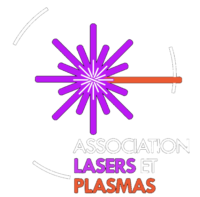PI: Dr. Sophie Baton, LULI, Palaiseau, France and Dr. Arnaud Colaitis, CELIA, Talence, France
Status: Performed in April 2018.
Publications: https://www.sciencedirect.com/science/article/pii/S1574181820300550
Preliminary results from the LMJ-PETAL experiment on hot electrons characterization in the context of shock ignition
S.D. Batona), A. Colaïtisb) et al,
a) LULI, CNRS-Ecole Polytechnique-CEA-Sorbonne Universités, F-91128 Palaiseau, France
b) CELIA, Université de Bordeaux-CNRS-CEA, F-33405 Talence, France
High Energy Density Physics 36 (2020) 100796
Keywords: Inertial confinement fusion, Shock ignition, Parametric instabilities, Hot electrons
Abstract : In the Shock Ignition scheme, the spike pulse intensity is well above the threshold of parametric instabilities, which produce a considerable amount of hot electrons that could be beneficial or detrimental to the ignition. To study their impact, an experiment has been carried out on the LMJ-PETAL facility with a goal to generate a strong shock inside a plastic layer under plasma conditions relevant to full-scale shock ignition targets. To evaluate the effect of hot electrons on the shock characteristics, laser temporal smoothing was either switched on or off, which in turns varies the quantity of hot electrons being generated. In this paper, we present preliminary results obtained during the experiment dedicated to the hot electron characterization. We present also calculations for the second part of the experiment, scheduled in 2020 and focused on the shock characterization.

Pulse shape of each of the three quads (b).

